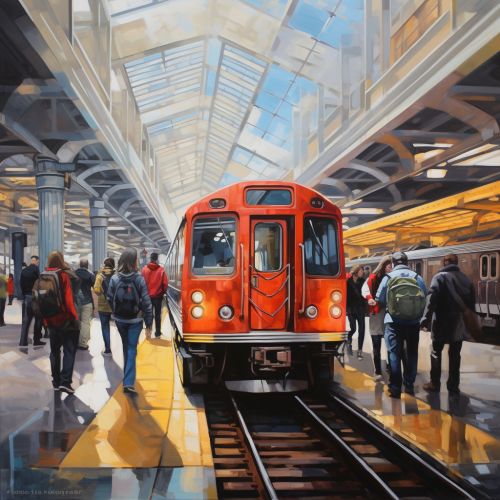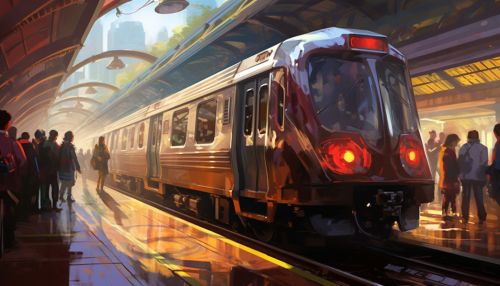New York City Subway
History
The New York City Subway is one of the oldest public transit systems in the world. Its first line opened on October 27, 1904, operated by the Interborough Rapid Transit Company (IRT). The system was later expanded by the Brooklyn-Manhattan Transit Corporation (BMT) and the Independent Subway System (IND). The three networks were consolidated under the control of the city in 1940.
Infrastructure
The New York City Subway is an extensive system consisting of 472 stations, making it the station with the most number of stations in the world. The system has a total track length of 665 miles (1,071 km). The subway system uses a mix of both underground and elevated lines. The majority of the system runs 24 hours a day, seven days a week.


Rolling Stock
The subway's rolling stock consists of more than 6,400 cars, most of them being 60 feet (18 m) long. The cars are maintained at facilities throughout the city. The New York City Subway also has a variety of retired rolling stock, including vintage and heritage trains.
Operations
The subway is operated by the Metropolitan Transportation Authority (MTA), a public benefit corporation. The MTA also operates the Staten Island Railway, which is considered a separate system. The subway's operations are divided into two divisions: the IRT and the BMT/IND. The divisions operate different types of cars and have different loading gauges and platform heights.
Fare Collection
The subway uses a fare control system with turnstiles. Passengers can pay their fares using MetroCard or OMNY, a contactless payment system. The subway also has a system of fare evasion enforcement, which includes regular patrols by officers.
Safety and Security
The New York City Subway has a variety of safety and security measures in place. These include a large police force, surveillance cameras, and emergency communication systems. The subway also has a number of programs to promote safety and security, such as the "See Something, Say Something" campaign.
Impact and Legacy
The New York City Subway has had a significant impact on the city and its culture. It has been featured in numerous films, television shows, and songs. The subway has also influenced the city's urban development and growth patterns.
See Also
New York City Transit Authority Metropolitan Transportation Authority History of the New York City Subway
